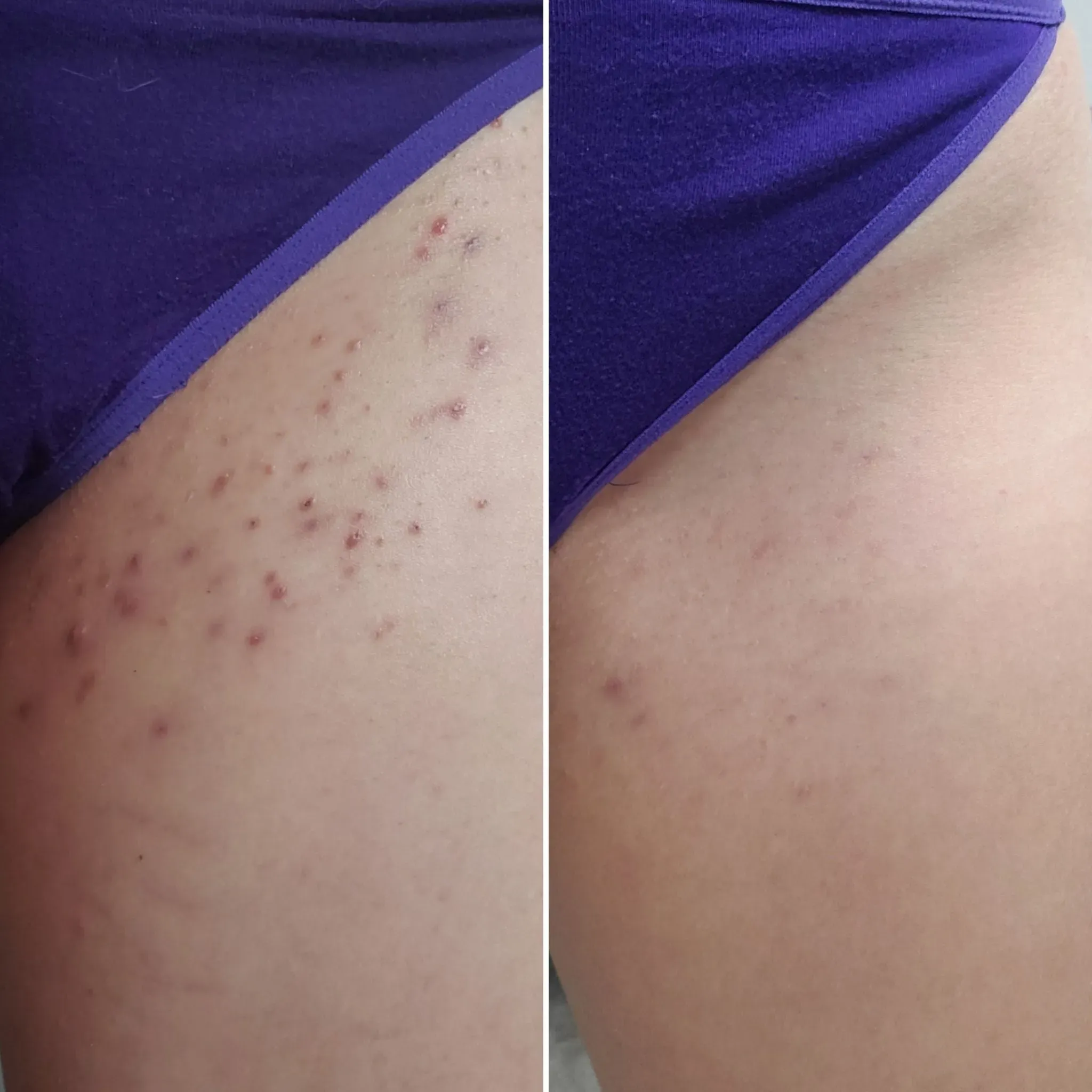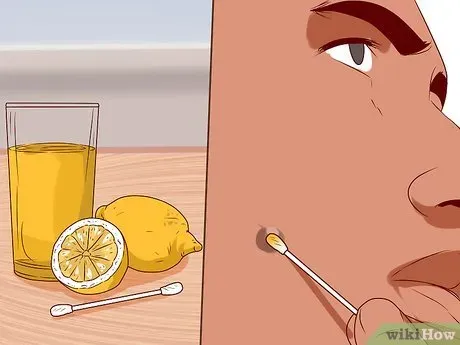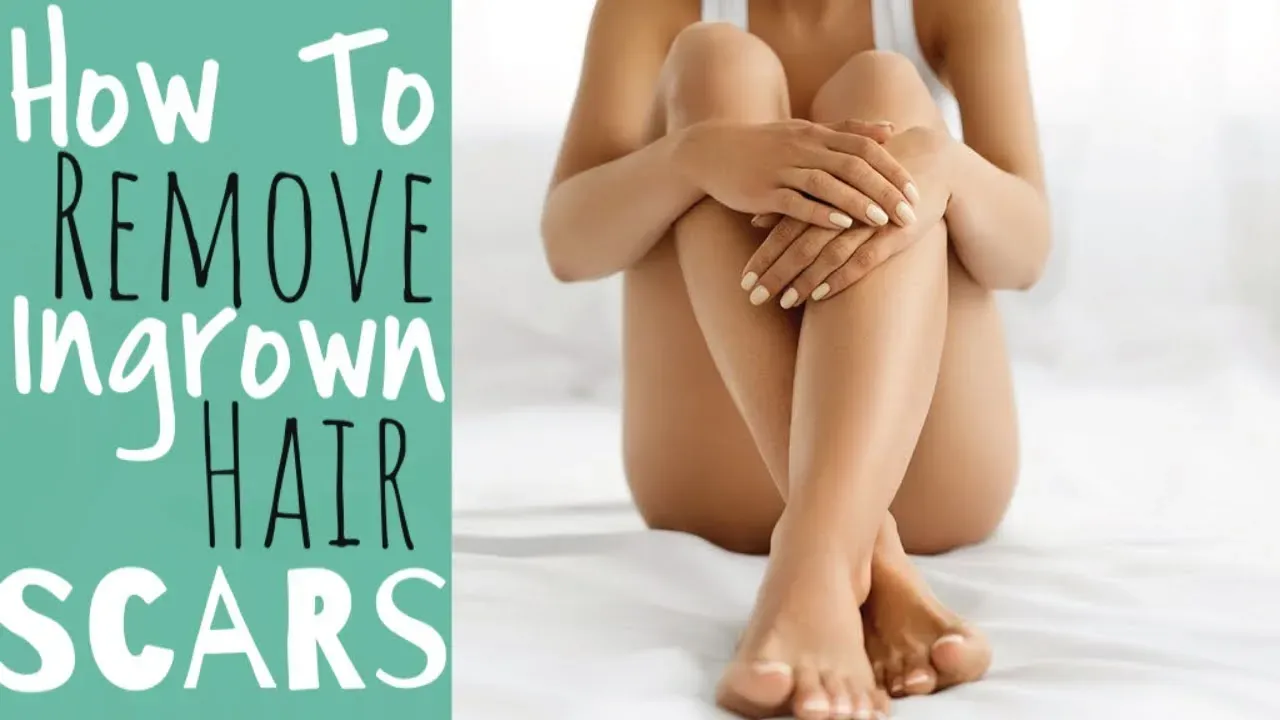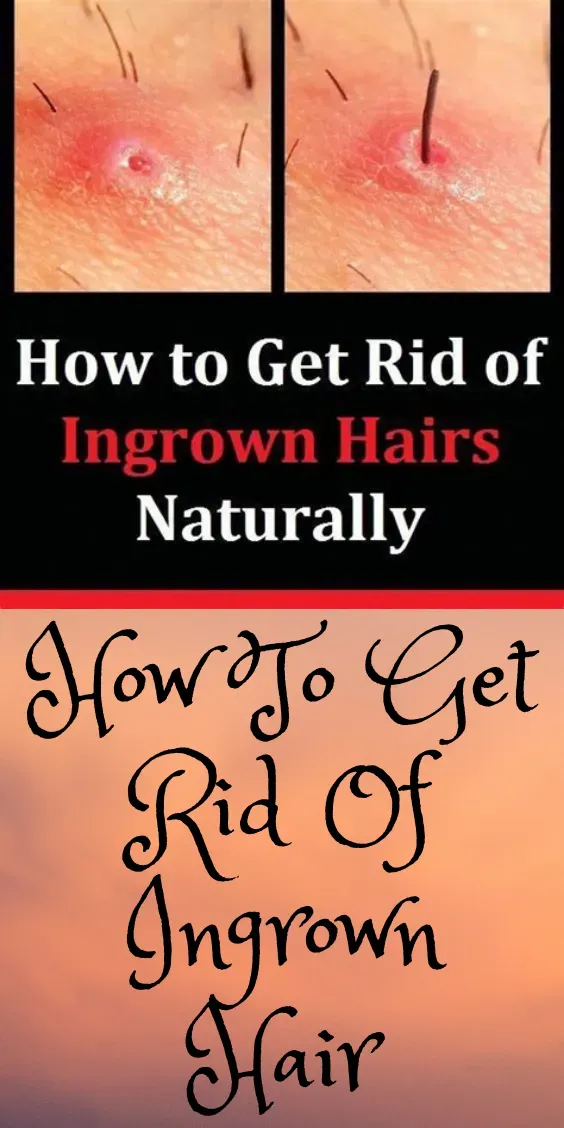Table of Contents
Let's be honest. Ingrown hairs are annoying enough on their own. But the real kick in the teeth? The dark spots and marks they leave behind, sometimes sticking around like uninvited guests. You finally get rid of the bump, only to be left with a constant reminder of its existence. It’s frustrating, perhaps even making you self-conscious about showing a little skin. You’ve probably tried covering them up or maybe even picking at them (we’ve all been there, right?). But what if you could actually make those stubborn marks fade? If you're wondering how to remove ingrown hair scars and finally get smoother, clearer skin, you're in the right place. These aren't just superficial marks; they're post-inflammatory hyperpigmentation or even raised keloid scars in some cases. We’ll walk you through understanding why they happen, effective home remedies, when it's time to call in the pros, and crucial steps to prevent them from forming in the first place. Get ready to tackle those scars head-on.
Why Ingrown Hairs Leave Scars (and How to Stop Them Early)

Why Ingrown Hairs Leave Scars (and How to Stop Them Early)
The Inflammatory Chain Reaction
so you get an ingrown hair. What happens next? Your body sees this trapped hair as a foreign invader. It mounts an immune response, which means inflammation. Think redness, swelling, pain, maybe even pus. This inflammation is your body trying to push the hair out or contain the problem. But this process can damage the surrounding skin tissue. When the inflammation is intense or lasts a long time, the skin's healing process goes into overdrive or becomes disorganized. This is when you start seeing those dark spots (post-inflammatory hyperpigmentation) or, less commonly, raised, thickened scars called keloids or hypertrophic scars. It's essentially the skin's clumsy attempt to repair itself after the drama caused by that pesky hair.
Catching Trouble Before It Starts
The key to minimizing scars is actually dealing with the ingrown hair *before* it becomes a huge, inflamed mess. The longer that hair is trapped and irritating the skin, the more likely it is to leave a lasting mark. Early signs like a small bump, redness, or tenderness are your cue to act gently. Don't dig or squeeze aggressively – that just adds trauma and makes scarring much more probable. Instead, focus on calming the area and encouraging the hair to release. Warm compresses can help open the pore. Gentle exfoliation might free the tip of the hair. The goal is to resolve the ingrown quickly with as little drama as possible for the skin.
What happens if you ignore an ingrown hair?
- Increased inflammation and pain.
- Higher risk of infection.
- More significant damage to skin tissue.
- Greater likelihood of developing a dark spot or scar.
- Potential for the ingrown hair to become a chronic problem in that spot.
DIY Methods: How to Remove Ingrown Hair Scars at Home

DIY Methods: How to Remove Ingrown Hair Scars at Home
Common Kitchen and Bathroom Cabinet Solutions
Alright, so you've got a few lingering marks and you're not ready to shell out for fancy treatments just yet. You're probably scouring the internet for how to remove ingrown hair scars using stuff you already have. There are a few common players in the DIY scar-fading game. Exfoliation is always high on the list, and for good reason. Gently sloughing off dead skin cells can help lighten dark spots over time. Things like sugar or salt scrubs (use fine grains, please, nothing too scratchy) are popular, though you need to be careful not to irritate the skin further. Chemical exfoliants, like those containing alpha hydroxy acids (AHAs) such as glycolic or lactic acid, or beta hydroxy acids (BHAs) like salicylic acid, can also be effective at speeding up cell turnover and fading pigmentation. Just introduce them slowly to avoid redness or peeling.
Beyond exfoliation, some folks swear by natural remedies. Lemon juice is often mentioned due to its natural bleaching properties, but honestly, putting straight lemon juice on your skin can cause irritation and make your skin more sensitive to the sun, potentially worsening the problem. Aloe vera is a classic for soothing and healing, which can help the skin recover and potentially minimize the appearance of new scars. Vitamin E oil is another popular choice, often massaged into scars with the belief it helps repair skin tissue. The evidence on Vitamin E for established scars is a bit mixed, but keeping the skin moisturized is never a bad idea for healing.
What DIY ingredients are often suggested?
- Sugar or Salt (physical exfoliation)
- AHAs/BHAs (chemical exfoliation)
- Lemon Juice (use with extreme caution, if at all)
- Aloe Vera (soothing, healing)
- Vitamin E Oil (moisturizing)
Consistency is Key (and Patience, Lots of Patience)
Look, you're not going to erase a scar overnight with a homemade concoction. Fading ingrown hair scars takes time and consistency. Whatever DIY method you choose, whether it's a gentle scrub a couple of times a week or a nightly application of a topical treatment, you need to stick with it. Expect to see gradual changes over weeks, maybe even months. If you're dealing with significant hyperpigmentation, progress can feel painfully slow. Raised scars are even tougher and DIY methods are unlikely to make a major difference there – they usually require professional intervention.
Are there risks with DIY methods? Absolutely. Over-exfoliating can damage your skin barrier, leading to more inflammation and potentially worsening scarring. Using harsh ingredients can cause burns or allergic reactions. Always patch test new products or ingredients on a small area of skin before applying them widely. And listen to your skin – if something stings, burns, or makes things look worse, stop using it.
When Home Remedies Aren't Enough: Advanced Options to Remove Ingrown Hair Scars

When Home Remedies Aren't Enough: Advanced Options to Remove Ingrown Hair Scars
let's talk reality. While sugar scrubs and aloe vera might offer some minor improvement for light marks, sometimes those ingrown hair scars are just too stubborn for the kitchen cabinet. We're talking about deeper hyperpigmentation that's been there for ages, or even those slightly raised, thickened scars that home remedies won't touch. When home remedies aren't enough, exploring advanced options to remove ingrown hair scars becomes necessary. This is when you might need to consult a dermatologist or licensed skin care professional. They have tools and treatments that go beyond simple exfoliation or soothing. Think chemical peels with higher concentrations of acids, microdermabrasion to physically buff away layers of skin, microneedling to stimulate collagen production and skin turnover, or even laser therapy specifically designed to target pigmentation or remodel scar tissue. These aren't quick fixes and often require multiple sessions, but they can make a significant difference in the appearance of more entrenched scarring.
What professional treatments might help?
- Chemical Peels (higher strength than at-home versions)
- Microdermabrasion
- Microneedling
- Laser Therapy (targeting pigment or texture)
- Prescription Topical Creams (like retinoids or hydroquinone)
The Role of Exfoliation and Skincare in Fading Scars

The Role of Exfoliation and Skincare in Fading Scars
Why Exfoliation is Your Scar's Worst Enemy (In a Good Way)
so you've got these dark marks left by ingrown hairs, right? They’re basically layers of skin cells that hold extra pigment, a leftover souvenir from the inflammation party. Exfoliation is like hitting the refresh button on your skin. By gently removing the dead, pigmented cells from the surface, you reveal the newer, less-pigmented skin underneath. Think of it as gradually sanding down a stained piece of wood to get to the clean layer below. This process speeds up cell turnover, which is crucial for fading any type of post-inflammatory mark. Consistent, *gentle* exfoliation is non-negotiable if you're serious about figuring out how to remove ingrown hair scars.
Physical vs. Chemical: Choosing Your Exfoliation Weapon
When it comes to getting rid of those surface cells, you've got options. Physical exfoliation uses small particles or a brush to manually scrub away dead skin. Sugar or salt scrubs are common, but be wary of anything too rough – you don't want to create *more* irritation. Chemical exfoliation uses acids, like AHAs (glycolic, lactic) or BHAs (salicylic), to dissolve the bonds between dead skin cells. These are often found in cleansers, toners, or serums. For scar fading, chemical exfoliants are often preferred because they work more evenly and are less likely to cause microscopic tears than aggressive scrubbing. Salicylic acid is particularly good because it also helps unclog pores, which can prevent *new* ingrown hairs from forming.
Which type of exfoliation is right for you?
- **Physical:** Good for instant smoothness, but riskier for sensitive or acne-prone skin. Use fine grains and light pressure.
- **Chemical (AHAs):** Excellent for surface pigmentation and overall skin brightness. Start with lower concentrations.
- **Chemical (BHAs):** Penetrates deeper into pores, good for oily skin, acne, and preventing future ingrowns. Can help with mild inflammation.
Beyond Exfoliation: Supporting Your Skin's Healing Journey
Exfoliation is key, but it's just one piece of the puzzle for how to remove ingrown hair scars. Your skin needs support to heal and regenerate properly. Ingredients like Vitamin C are powerful antioxidants that can help brighten dark spots and protect against future damage. Niacinamide (Vitamin B3) is another workhorse, improving skin barrier function, reducing redness, and helping fade hyperpigmentation. Retinoids (like retinol or prescription tretinoin) are gold standards in dermatology for increasing cell turnover and stimulating collagen, making them effective for both pigmentation and textural changes in scars, though they can cause initial irritation. And sun protection? Non-negotiable. UV exposure darkens existing scars and hinders the healing process. A broad-spectrum SPF 30 or higher applied daily is mandatory if you're trying to fade marks.
Think of your skincare routine as a team effort:**
Ingredient Role | Example Ingredients | Benefit for Scars |
|---|---|---|
Cell Turnover | AHAs, BHAs, Retinoids | Speeds up shedding of pigmented cells |
Brightening | Vitamin C, Niacinamide, Kojic Acid | Inhibits melanin production, fades dark spots |
Soothing/Healing | Aloe Vera, Centella Asiatica, Ceramides | Reduces inflammation, supports skin barrier |
Protection | SPF 30+ (Zinc Oxide, Titanium Dioxide) | Prevents darkening of scars from sun |
Preventing Future Ingrown Hairs and Scars

Preventing Future Ingrown Hairs and Scars
Mastering Your Hair Removal Technique
so you've done the work to fade existing marks and you're feeling pretty good. Now, how do you stop this whole ingrown hair and scar cycle from starting up again? It really boils down to changing how you remove hair in the first place. Shaving against the grain might give you a super close shave, but it dramatically increases the risk of hairs curling back into the skin. Shave *with* the grain whenever possible. Use a sharp razor – a dull blade is like dragging a tiny, jagged saw across your skin, causing irritation and making hairs more prone to getting trapped. Prep your skin with warm water and a good shave gel or cream to soften the hair and skin. After shaving, rinse with cool water to close pores and apply a soothing, alcohol-free balm. If you wax, ensure the hair is long enough and pulled in the direction of growth, not against it. Laser hair removal, offered at places like hairawaybylaser.com, can be a more permanent solution that significantly reduces the chance of ingrown hairs altogether by targeting the follicle itself.
Building a Post-Hair Removal Skincare Routine
What you do immediately after hair removal is just as important as the removal process itself. This is prime time to calm the skin and prevent inflammation that leads to ingrowns and subsequent scars. Look for products designed to prevent ingrown hairs. These often contain ingredients like salicylic acid or glycolic acid in lower concentrations than scar treatments, aimed at keeping the hair follicle clear. Applying a soothing serum or lotion with ingredients like aloe vera, chamomile, or niacinamide can reduce redness and irritation. Avoid tight clothing immediately after hair removal, as friction can push hairs back into the skin. Giving your skin some breathing room helps it recover properly.
- Always shave or wax on clean skin.
- Exfoliate gently *before* hair removal (not immediately after).
- Shave with a sharp blade, in the direction of hair growth.
- Use a lubricating shave gel or cream.
- Rinse with cool water post-shave.
- Apply a soothing, alcohol-free product afterwards.
- Consider chemical exfoliants (like salicylic acid) a day or two later to keep follicles clear.
- Avoid tight clothes right after hair removal.
Long-Term Strategies for Smooth Skin
Preventing ingrown hair scars isn't just about the immediate hair removal process; it's also about consistent skin care. Keeping your skin generally healthy and well-exfoliated (gently!) helps prevent dead skin cells from blocking follicles. Hydration is also key; supple skin is less prone to irritation and inflammation. For persistent problems, exploring alternative hair removal methods might be necessary. Methods that remove the hair follicle entirely, like laser hair removal or electrolysis, drastically reduce the likelihood of ingrowns compared to shaving or waxing, thereby preventing the cause of the scars in the first place. It’s about finding a routine that works for your skin type and hair growth pattern, and sticking with it to break the cycle.
Putting the Scars Behind You
Alright, so we've covered the ground rules: stopping the cycle is step one. You've got a toolkit now, from slathering on alpha hydroxy acids at home to considering more serious interventions if those marks are digging in deep. Remember, getting rid of ingrown hair scars isn't an overnight miracle; it takes persistence and finding what works for your specific skin and scar type. The key is consistency, patience, and smart prevention. By addressing ingrowns promptly and treating the resulting marks with the right approach, you can significantly improve their appearance. Don't let those little reminders of past bumps dictate how you feel about your skin. Take action, be diligent, and give your skin the chance to heal and clear up.
